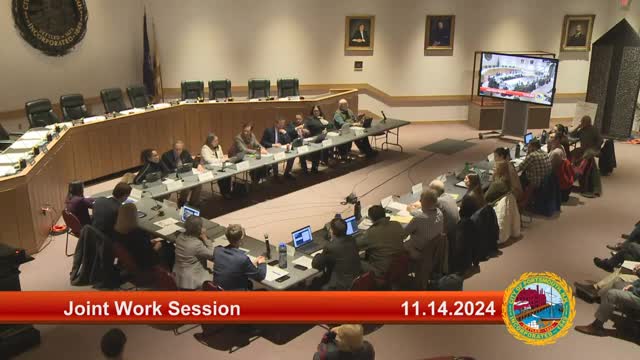Community debates future of historic school building
November 15, 2024 | Portsmouth City Council, Portsmouth, Rockingham County, New Hampshire
This article was created by AI summarizing key points discussed. AI makes mistakes, so for full details and context, please refer to the video of the full meeting. Please report any errors so we can fix them. Report an error »

During a recent government meeting, significant discussions centered around the future of a local school building, with concerns raised about its structural integrity and the potential for renovation versus demolition. A council member expressed apprehension regarding the safety of the building, highlighting the need for repairs and questioning whether it is suitable for housing students. The member shared personal experiences from their time in the building, emphasizing the visible signs of wear and the necessity for extensive repairs.
In response, the facilities director assured attendees that the building could be retrofitted to meet modern energy efficiency and safety standards, noting its solid construction despite the required updates. The committee members acknowledged the importance of deciding whether to preserve the building or pursue alternative development options, indicating that both paths could lead to successful outcomes.
The conversation also touched on the selection process for a developer, with one council member commending the city manager and staff for their effective handling of the request for proposals (RFP). There was a consensus that the next step should involve selecting a firm to collaborate with, rather than getting bogged down in the specifics of each proposal.
A key point of discussion was whether to prioritize local developers or remain open to outside firms. Some members argued that while local involvement is valuable, the focus should be on selecting the best project for the community, regardless of the developer's origin. This sentiment was echoed by others who noted that previous attempts to work exclusively with local developers had met with community resistance.
As the meeting progressed, the council members reflected on the broader implications of their decisions, particularly regarding the preservation of the school as part of the community's tradition and the potential for converting it into affordable housing. The discussions underscored a strong sentiment among council members to consider the historical significance of the building while balancing the need for modern development.
In response, the facilities director assured attendees that the building could be retrofitted to meet modern energy efficiency and safety standards, noting its solid construction despite the required updates. The committee members acknowledged the importance of deciding whether to preserve the building or pursue alternative development options, indicating that both paths could lead to successful outcomes.
The conversation also touched on the selection process for a developer, with one council member commending the city manager and staff for their effective handling of the request for proposals (RFP). There was a consensus that the next step should involve selecting a firm to collaborate with, rather than getting bogged down in the specifics of each proposal.
A key point of discussion was whether to prioritize local developers or remain open to outside firms. Some members argued that while local involvement is valuable, the focus should be on selecting the best project for the community, regardless of the developer's origin. This sentiment was echoed by others who noted that previous attempts to work exclusively with local developers had met with community resistance.
As the meeting progressed, the council members reflected on the broader implications of their decisions, particularly regarding the preservation of the school as part of the community's tradition and the potential for converting it into affordable housing. The discussions underscored a strong sentiment among council members to consider the historical significance of the building while balancing the need for modern development.
View full meeting
This article is based on a recent meeting—watch the full video and explore the complete transcript for deeper insights into the discussion.
View full meeting
